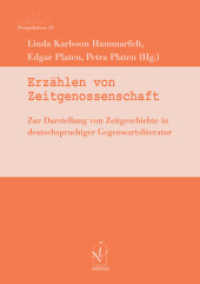Full Description
Translation practice and workflows have witnessed significant changes during the last decade. New market demands to handle digital content as well as technological advances are leading this transition. The development and integration of machine translation systems have given post-editing practices a reason to be in the context of professional translation services. Translators may still work from a source text, but more often than not they are presented with already translated text involving different degrees of translation automation. This scenario radically changes the cognitive demands of translation.
Technological development has inevitably influenced the translation research agenda as well. It has provided new means of penetrating deeper into the cognitive processes that make translation possible and has endorsed new concepts and theories to understand the translation process. Computational analysis of eye movements and keystroke behaviour provides us with new insights into translational reading, processes of literality, effects of directionality, similarities between inter- and intralingual translation, as well as the effects of post-editing on cognitive processes and on the quality of the final outcome.
All of these themes are explored in-depth in the articles in this volume which presents new and valuable insights to anyone interested in what is currently happening in empirical, process-oriented translation research.
Contents
1. Introduction; 2. Part I. Cognitive processes in reading during translation; 3. Reading for translation (by Schaeffer, Moritz); 4. Four fundamental types of reading during translation (by Hvelplund, Kristian Tangsgaard); 5. Part II. Literality, directionality, and intralingual translation processes; 6. Measuring translation literality (by Carl, Michael); 7. Translation, post-editing and directionality: A study of effort in the Chinese-Portuguese language pair (by Lourenco da Silva, Igor A.); 8. Intralingual and interlingual translation: Designing a comparative study of decision-making processes in paraphrase and translation (by Whyatt, Boguslawa); 9. Part III. Computing and assessing translation effort, performance, and quality; 10. From process to product: Links between post-editing effort and post-edited quality (by Nunes Vieira, Lucas); 11. Quality is in the eyes of the reviewer: A report on post-editing quality evaluation (by Guerberof, Ana); 12. Translation technology and learner performance: Professionally-oriented translation quality assessment with three translation technologies (by Morin, Katell Hernandez); 13. Notes on contributors








